The Value of an Oyster: New research seeks to optimize farmed oysters
On a windy fall day in Corpus Christi Bay, researchers brave the elements to study eastern oysters—vital to Texas fisheries and coastal ecosystems. Backed by Texas Sea Grant, this work explores oyster genetics and physiology to support sustainable aquaculture and conservation efforts.
Jun 7, 2022 By Zoe Ruben
9 minutes

Texas Sea Grant
It is a blustery fall day as Dr. Joey Matt wades into the waters of Corpus Christi Bay. He grits his teeth as the wind whips around him and the crisp water finds the miniscule holes in his waders. Conditions are less than ideal for an afternoon wade, but this work must be conducted, rain or shine.
Before Matt lies a grid of cages, kept buoyant with pontoons and bobbing along with the ocean currents. Slowly and methodically, Matt makes his way to each cage and checks that the treasures within are still secure. These are not treasures in the traditional sense; they are made of calcium carbonate instead of spun in gold. But to Matt and the rest of his research team at Texas A&M University-Corpus Christi’s Marine Genomics Laboratory, these treasures are invaluable.
Current Status
The eastern oyster, Crassostrea virginica (C. virginica), holds a strong economic value to fisheries in the state of Texas. According to the most recent NOAA Fisheries Report, the Gulf of Mexico region led nationwide oyster production by volume with 24.3 million pounds of meat. Texas oyster fisheries alone are valued at approximately $33.4 million annually and provide livelihood for commercial fishermen along the coast.
Additionally, oysters provide a variety of ecosystem services. Because they are filter-feeders, they act as a natural filter for surrounding ocean waters and can cleanse these waters of excess nutrients and pollutants.
Even the structure of these organisms is beneficial; since oysters are reef-building species, they may serve as shoreline protection from storm surges, re-fortify wetlands, and provide habitat for a variety of marine organisms. These immobile ecosystem engineers have, in fact, been suggested as an indicator species for long-term monitoring of coastal health.
However, oysters have been subjected to a variety of natural and anthropogenic stressors, especially in recent years.
In Texas, freshwater withdrawals have increased, leading to less freshwater input into rivers and streams and higher salinities in areas that have historically harbored oyster reefs. Salinity regimes and anthropogenic stressors have also driven decline in natural oyster populations, thus increasing the appeal of oyster aquaculture.
In response to the demand for cultured oysters, House Bill 1300 and Senate Bill 682 became effective in the state of Texas in 2019, legalizing commercial aquaculture of oysters in the state for the first time.
Balancing the growth of the economy and ecology of the wild oyster population is critical. A key consideration for ensuring coexistence is genetic variation.
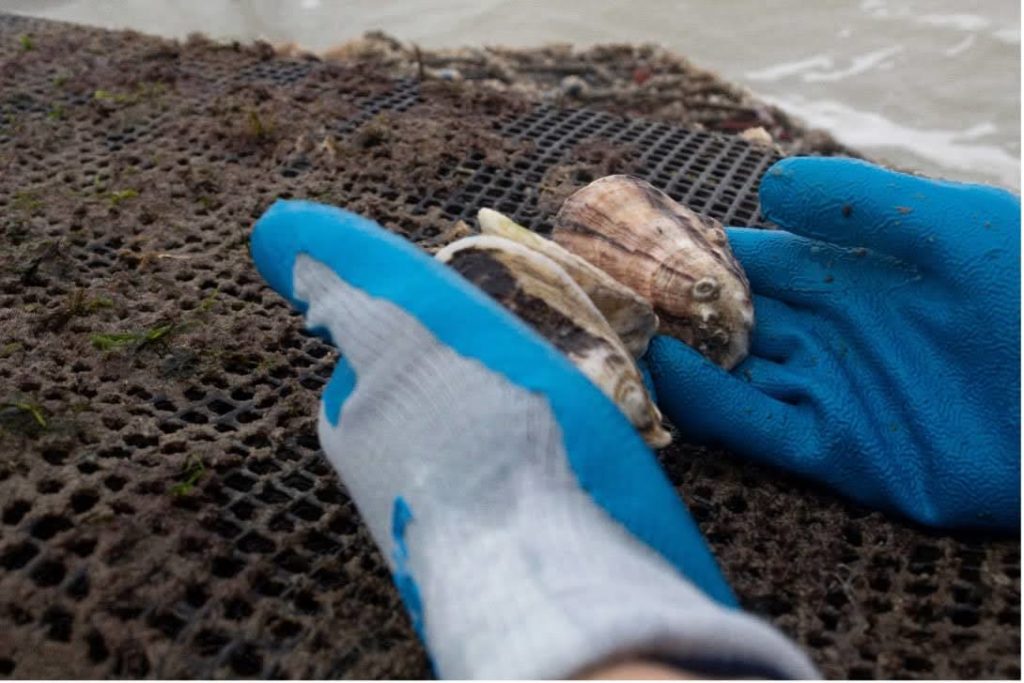

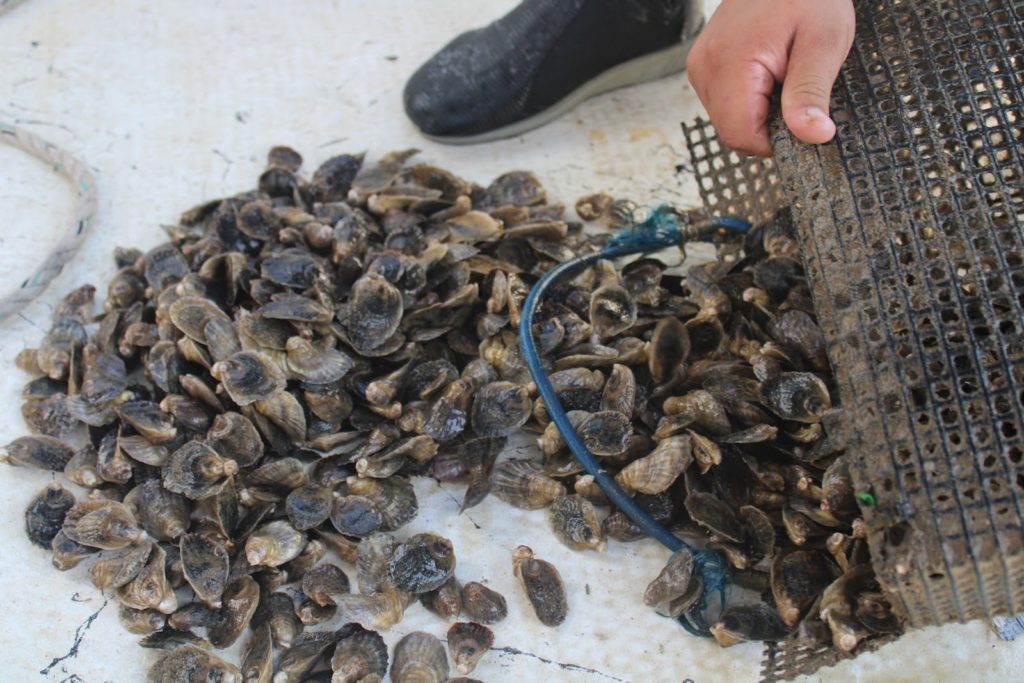
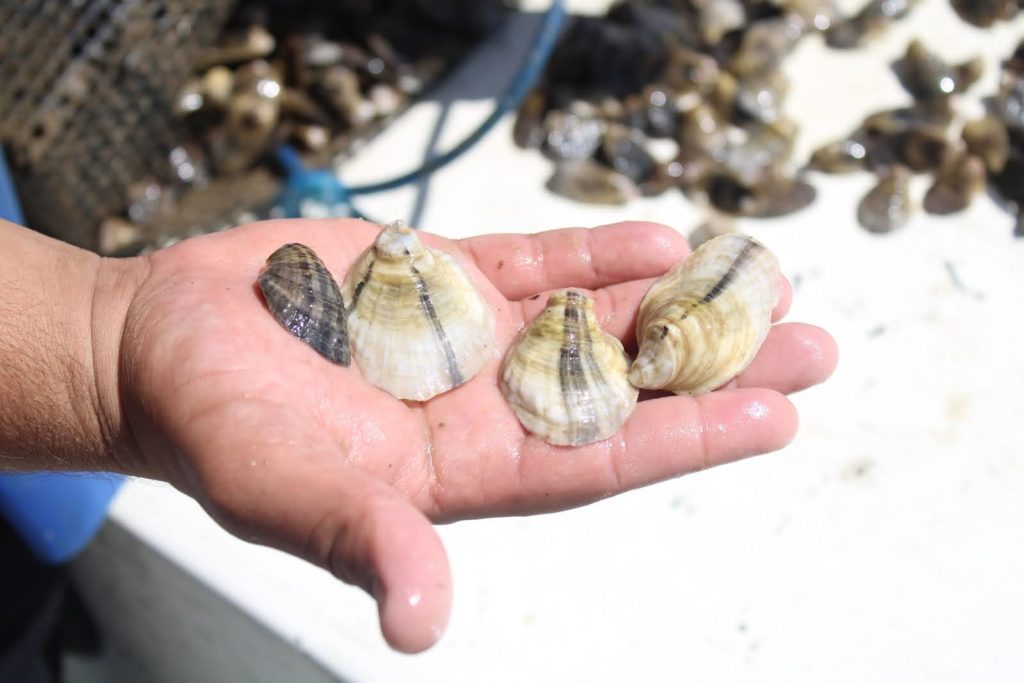
Profiling the Individual
Matt and the rest of the Marine Genomics Laboratory team, led by Dr. Chris Hollenbeck, Dr. David Portnoy, and collaborator Dr. Keisha Bahr, are conducting research to design a cutting-edge and cost-effective genetic marker panel to enable routine determination of the genetic origin of individual C. virginica in Texas waters. Understanding these origins may inform local adaptation strategies.
This project is underway and will take place over the next two years thanks to funding through Texas Sea Grant.
“It used to be fairly expensive to get genetic information for individual organisms,” said Hollenbeck. “But advances in molecular biology and DNA sequencing technology in the last 10 to 15 years have dramatically reduced these costs.”
More specifically, the research team will use a relatively new genetic technology known as next generation targeted amplicon sequencing. This entails genetically targeting several hundred unique sites within the complete set of genes of oyster individuals. Here, sites refers to regions of DNA. These sites then get sequenced — or matched — to known regions of DNA based on previously sequenced oysters of the same species, which is useful for assigning individual oysters to their population of origin.
“In this way, we can easily assign individuals to one population or the other and use that information, along with information about where each oyster was collected, what the environment was like, et cetera, to spatially map the genetic transition zone,” said Hollenbeck.
C. virginica can be broken down into two genetically distinct subpopulations in Texas: a southern population that is found along the South Texas coast, and a northern population that starts along the Texas coast and extends eastward along the length of the Gulf of Mexico.
Mixing of these two subpopulations naturally occurs in a shifting transition zone that spans several bays and estuaries along the Coastal Bend. Understanding and predicting these shifts in the transition zone is paramount as commercially farmed oysters must be of the same genetic background to geographically maintain the population structure. Due to the mixed genetic background within the transition zone, it is unclear how populations will respond to stressors such as environmental change and exploitation and whether these populations are sustainable.
For example, hybrid individuals, those that have mixed ancestry from both subpopulations–which are found at higher frequency in the transition zone–have demonstrated reduced larval viability in previous studies, meaning that oysters within the transition zone are potentially less likely to reproduce at the same rate outside the zone.
It is also important to understand oyster subpopulation response to shifting environmental conditions such as temperature and salinity changes to understand the potential for adaptation at the local level.
The genetic transition zone in which mixing of C. virginica subpopulations occurs changes over time. Pie charts next to sampling locations represent the proportions of northern subpopulation (green) and southern subpopulations (purple) observed at two timepoints.
On the right, is a breakdown of these proportions by sampling event.
Sampling locations (south to north) are Port Mansfield (pma), Upper Laguna Madre (ulm), Corpus Christi Bay (ccb), Redfish Bay (ref), Aransas Bay (ara), and Matagorda Bay (mat). Figure courtesy of Dr. Chris Hollenbeck.
Painting the Whole Picture
Characterizing these oysters does not stop with genetics, however. To obtain a more holistic profile of these Texas oysters, it is important to understand their physiology. Research on this takes place at the Texas A&M AgriLife Research Mariculture Laboratory in Corpus Christi.
Here, Matt works with Ph.D. candidate Alexandra Good of the Bahr Marine Ecology Lab, and undergraduate researcher Kate Gomez-Rangel. Together, they are hard at work maintaining the oysters for research. A typical day at the mariculture laboratory involves upkeeping larval, seed, and adult oysters, building new or making improvements on existing life support systems, and measuring the metabolism of individual oysters using respirometry chambers.
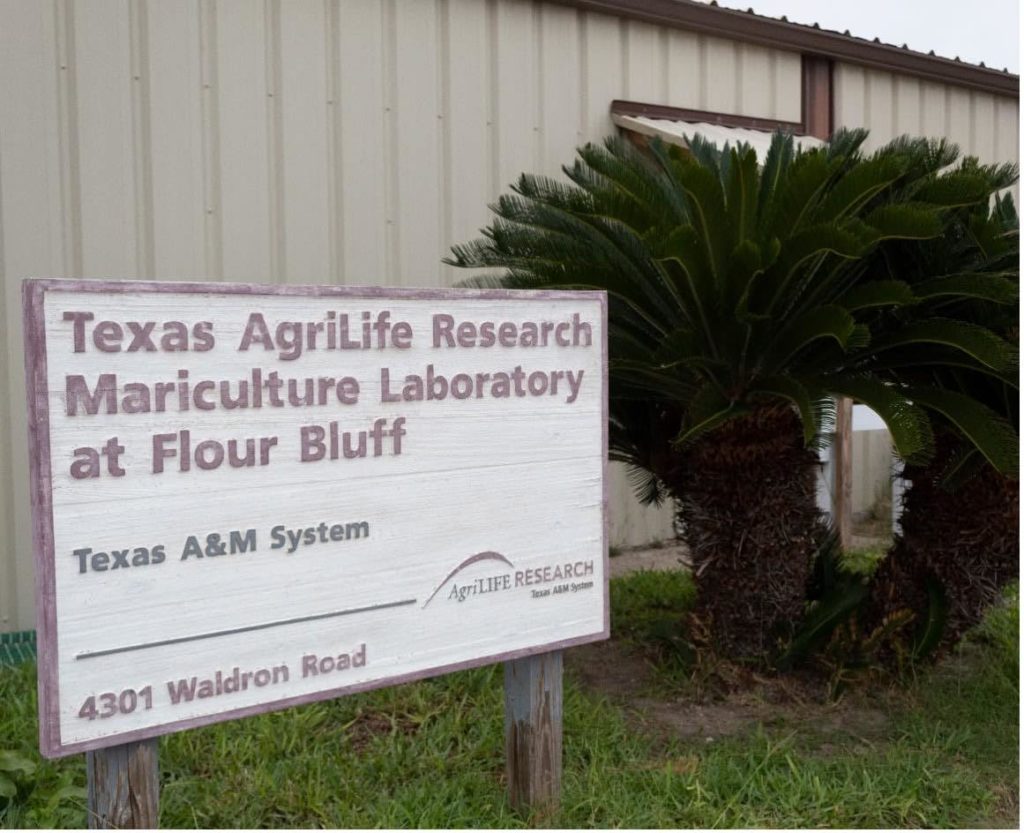
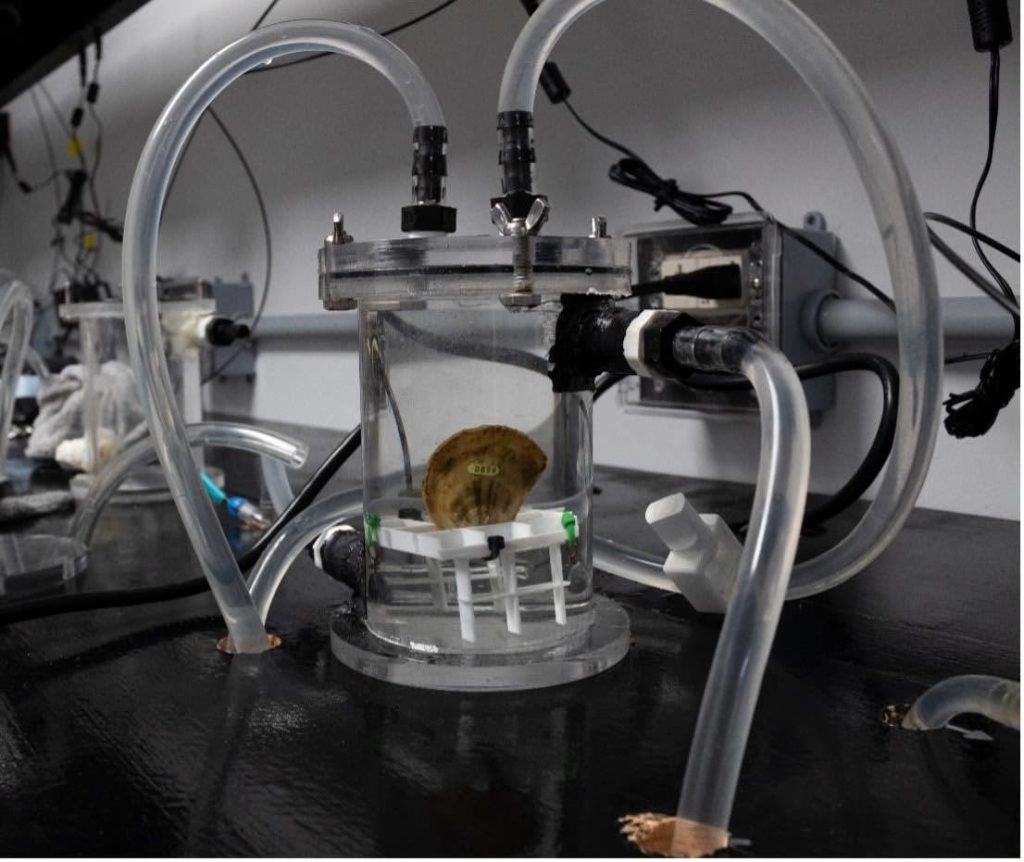
Respirometry is the measure of an individual’s oxygen consumption, akin to determining the oxygen consumption it would take for an oyster to run on a treadmill. This research forms one of the three pillars of Good’s dissertation work. She, with help from Gomez-Rangel and other staff and students at the laboratory, is building a chamber system which will allow for manipulation of environmental conditions within each chamber while measuring the respirometry of individual oysters exposed to these conditions.
“Assessing the physiological responses of the genetically distinct populations gives insight to local adaptations to diverse environmental conditions along the Texas coastline,” explains Good.
This work does not come without its challenges. “As with any research project, I think the most challenging part is working through the troubleshooting aspects, whether it be a simple or complicated problem. I’ve learned that research isn’t easy, but the feeling of giving back to my community through science makes the challenges worth it”, shares Gomez-Rangel, a Corpus Christi native.
Despite the setbacks, the team is making steady progress with both their genetic and physiological research. They hope to maintain more of an open door policy with this research so that more individuals, particularly those outside the sciences, can understand and appreciate the value of oysters to the Gulf Coast. Good has already had success with previous outreach initiatives.
“Last year we hosted the West Oso Middle School Science, Technology, Engineering, & Math (STEM) Girls for a fieldtrip at the hatchery to show them around in hopes they would better understand the overlap between science and industry work”, Good shares. “I think it’s important for people, especially young girls, to see how science, policy, and industry work together to create solutions to our environmental issues. I plan to continue my collaboration with the West Oso school district in hopes that we can create more field trips or science opportunities for the students to participate in problem-based learning alongside classroom-based learning.”
Although this oyster profiling project is still in its beginning stages, the research team is hopeful for the impact it will have at multiple levels (from farmers to stakeholders) in the Gulf Coast region.
“If we can better understand how oysters are adapting to their environment, we can give people that work with oysters better information,” states Hollenbeck. “Farmers could have a better sense for how and when to stock their farms, resource managers could model and predict changes to populations from environmental data to improve management of the fishery, and conservation specialists could more effectively restore reefs by understanding how the combination of environmental factors and genetic background impact survival and growth on a reef.”
Oyster Facts from the Experts
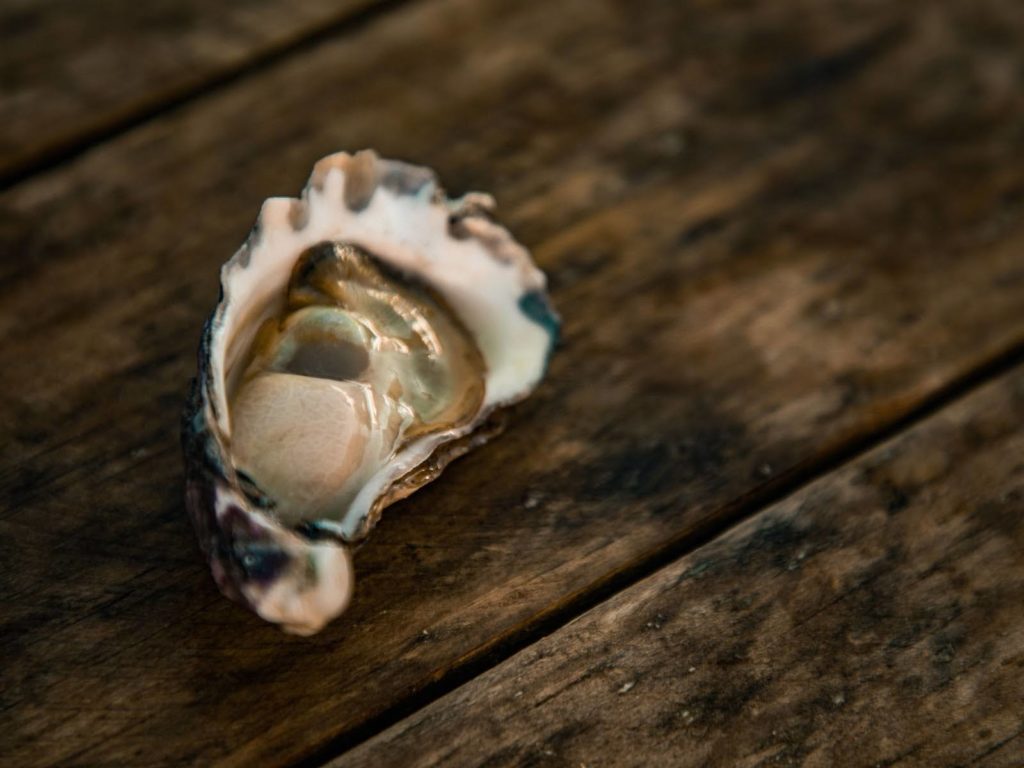
Photo by Anima Visual on Unsplash
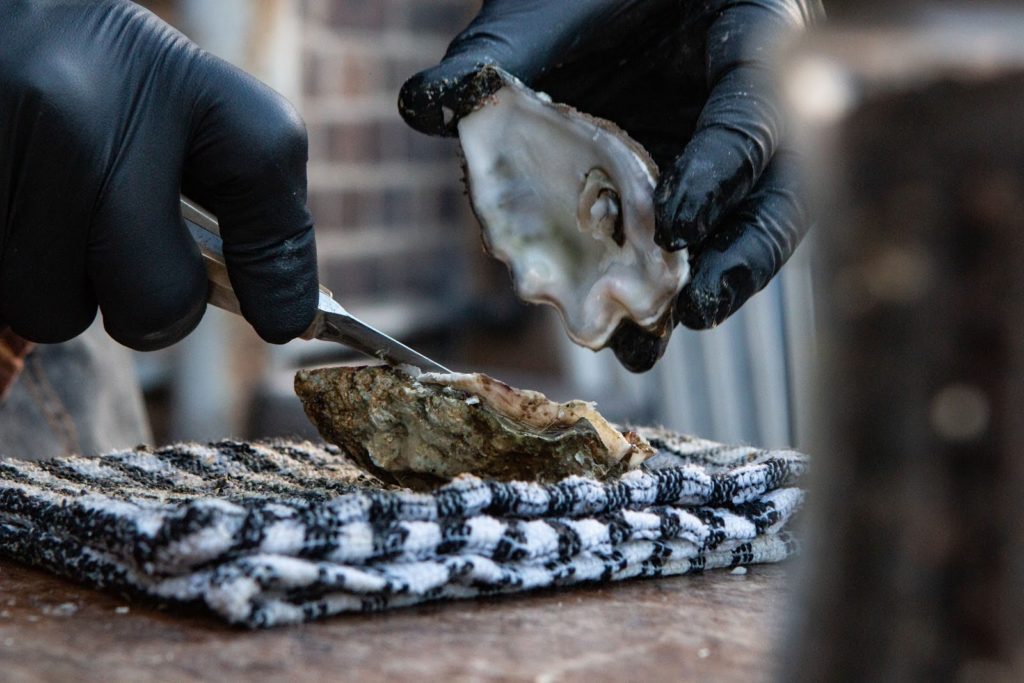
Photo by Thomas John on Unsplash
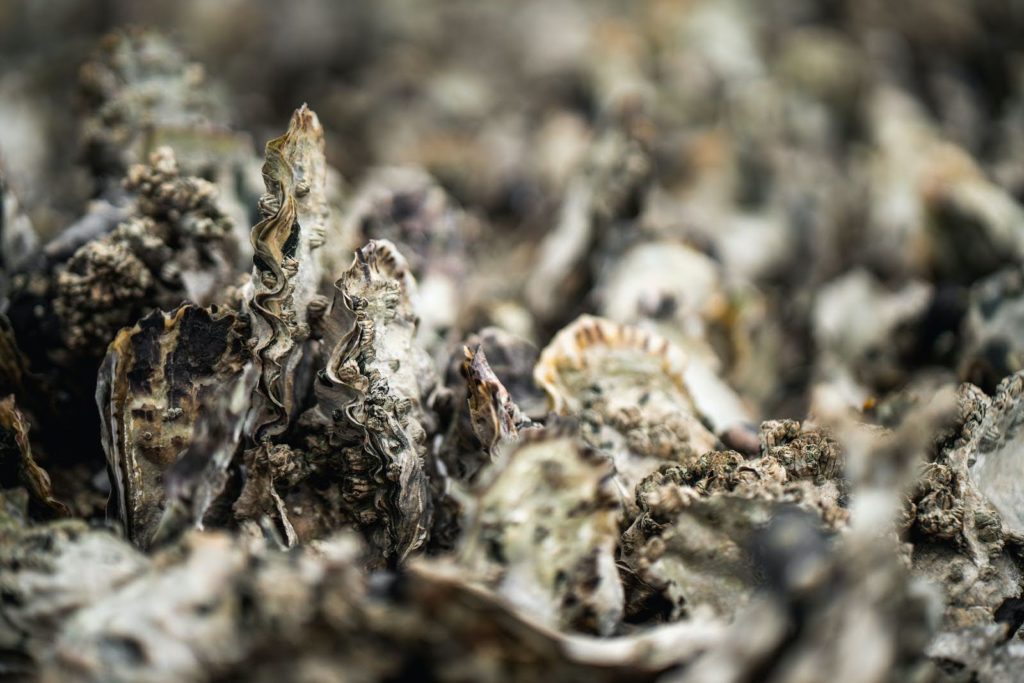
Photo by Toan Chu on Unsplash
NOAA Fisheries Report: https://media.fisheries.noaa.gov/2022-05/Fisheries-of-the-United-States-2020-Report-FINAL.pdf
Thomas et al., 2018: Thomas, Y., Cassou, C., Gernez, P., and Pouvreau, S. (2018). Oysters as sentinels of climate variability and climate change in coastal ecosystems. Environ. Res. Lett. 13, 104009. doi: 10.1088/1748-9326/AAE254.
The Nature Conservancy: https://www.nature.org/content/dam/tnc/nature/en/documents/OysterRestorationintheGulf.pdf
Harte Research Institute: https://www.harteresearch.org/oyster-aquaculture#:~:text=Oyster%20farming%20is%20now%20legal,pressure%20on%20natural%20oyster%20reefs.
Anderson, J. D., Karel, W. J., Mace, C. E., Bartram, B. L., and Hare, M. P. (2014). Spatial genetic features of eastern oysters (Crassostrea virginica Gmelin) in the Gulf of Mexico: northward movement of a secondary contact zone. Ecol. Evol. 4, 1671–1685. doi: 10.1002/ECE3.1064.
Martinez-Bucciantini, Mirella, ‘Development, Growth, and Environmental Adaptations in Two Genetically Distinct Populations of the Eastern Oyster, Crassostrea Virginica (Gmelin)’ (Texas A&M University, 1995)
Visit oyster.texasseagrant.org
